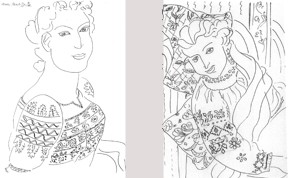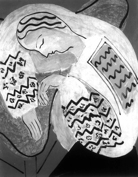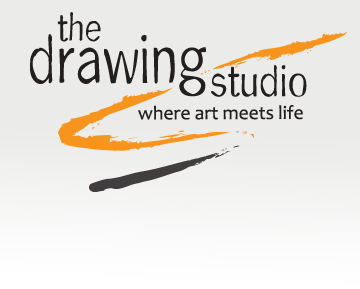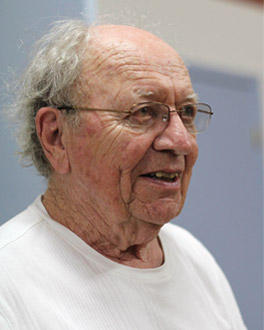
Some few years ago at the Metropolitan Museum in New York, I saw these ink line drawings of Henri Matisse (French; 1869-1954), in which he explored the Slavic blouse patterns used in his painting The Dream (ca. 1940). I had just finished reading Hilary Spurling’s brilliant two volume biography of Matisse in which she pointed out that Matisse had grown up in a region in the north of France that was the center of a cottage industry of hundreds of hand weavers, who produced the many elegant textile patterns used by the Parisian fashion industry of the early 19th century.
Matisse was one of the first modern French artists after Van Gogh, whose frontal and bright tactile ways challenged the standing conventions of European painting at that time, with its emphasis on historical narrative, spatial illusion, and technical bravura. Matisse’s contribution to the Impressionist movement was a rigorous re-examination of how to represent what one really sees around and in one’s own life. It is a kind of no-brainer to an artist like me to learn how his art was early and clearly rooted in the visual power of shape and pattern from childhood.
At The Drawing Studio one of the first issues we address in our beginning drawing class is that what one “knows” about something actually creates a kind of blind spot to seeing what’s there. To penetrate this paradox, our first drawing exercises practice distinguishing the shape and patterns of the objects or scenes we are looking at. These exercises are based upon the fact that “the eye sees flat,” an obvious foundation of vision that is over-run quickly by the parts of the brain that turns “shape data” into all kinds of things.
Simply put, the brain really likes pattern and seeks it out first thing. Why? Because pattern recognition evolved in the early visual brain as an important survival tool. Shape patterns are an efficient shorthand, a way to store visual memory that is even at this moment matching each object/shape in your view against thousands of patterns in one’s subliminal brain file of danger shapes (sharp edges and points, tigers and snakes, dark and light etc).
But pattern recognition isn’t only avoiding harm, it is also for safety and comfort. That aspect of pattern recognition we might even call aesthetic–i.e., the pleasure, comfort and even joy that we take from light, shape and color, the basic elements of visual pattern. One only has to look into our homes rich or poor to find our love of pattern in our furniture, walls and window drapes, beds and carpets, and often our bodies.
For those of us who love to draw, Matisse’s work should be carefully studied because he shows us how drawing returns us to the most basic foundation of what it is that we actually see, a pattern of shapes. Matisse shares what he sees– simply, personally and so efficiently you almost don’t notice how he got inside you.
Such efficiency of means however is only earned through a lot of practice, as Matisse well knew. I was a friend of the Israeli artist-teacher Jona Mach, who told me the story of Matisse visiting his school in Jerusalem, just after the war. Jona said that one the young drawing teachers had his students drawing with pen and line that day, thinking Matisse would approve. But on the contrary Matisse was really annoyed and stopped the class. He said that way of working was for later, when you knew something. He wanted students to experiment, make messes, even overdraw in order to find their own path to what is essential. True simplicity is a function of practice.
Note to artists: Look to your own early childhood for the strongest influences that inform your own art (People, memories, events, things).

Henri Matisse, “The Dream”




2 Responses to On Henri Matisse